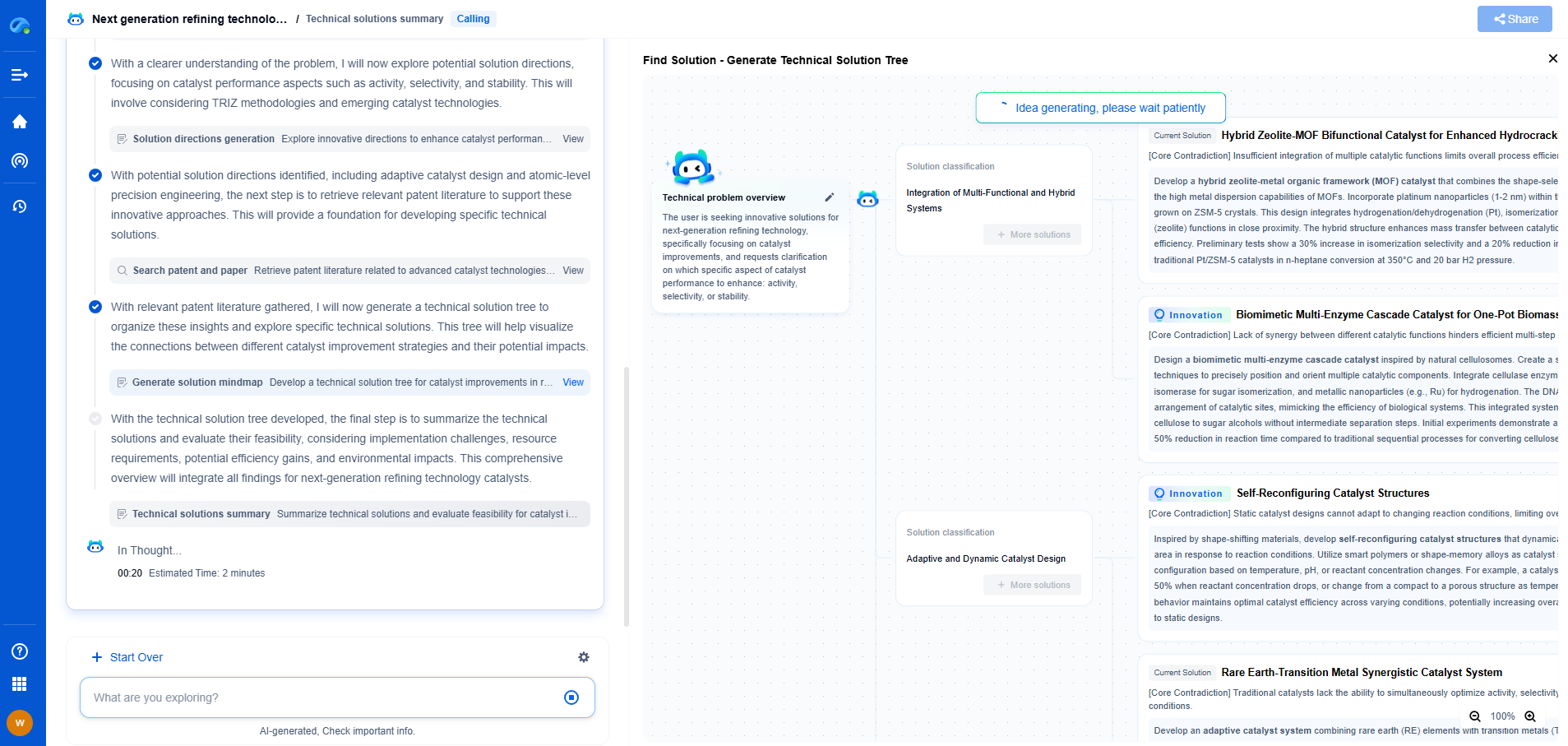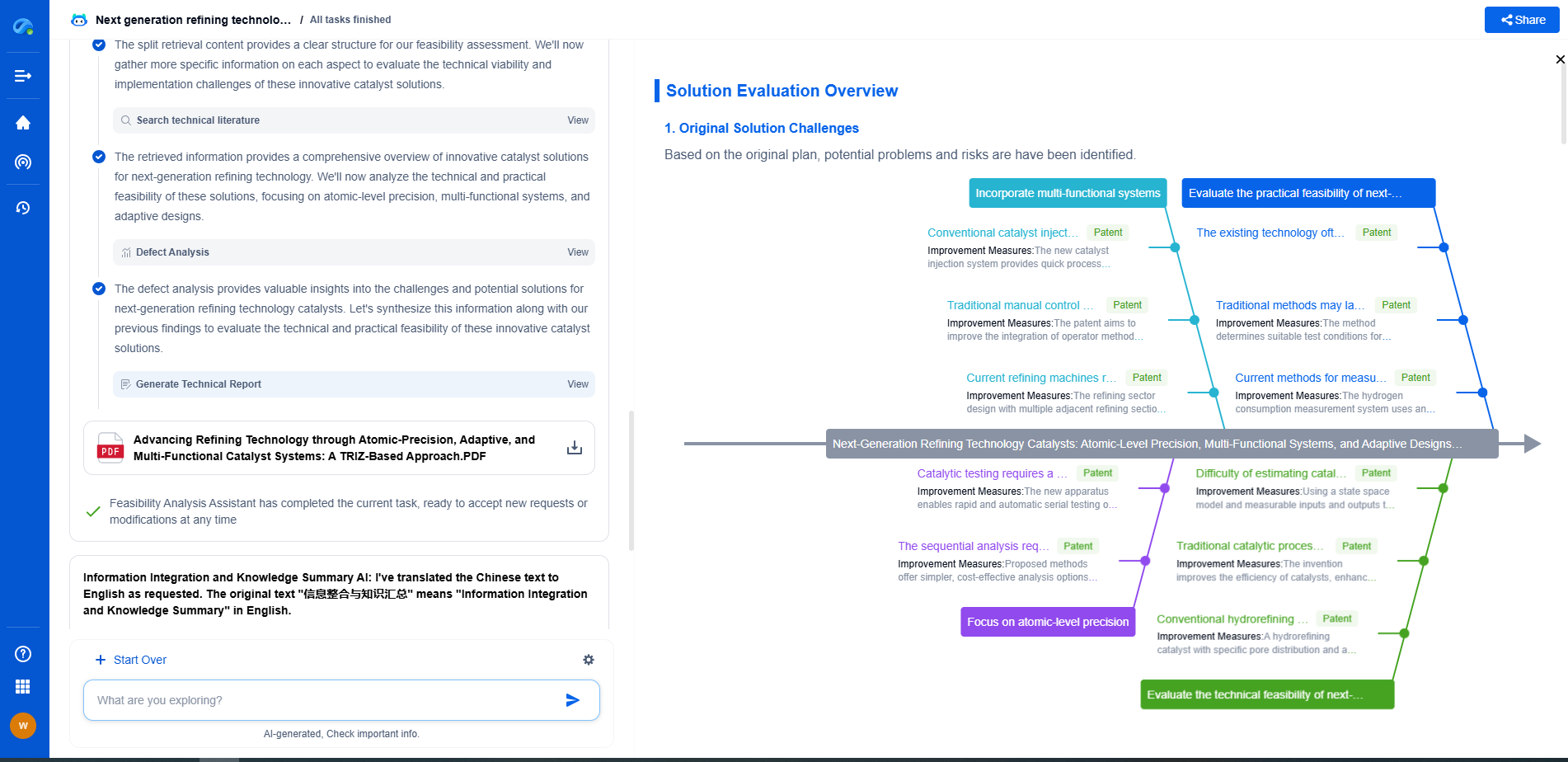What Are Electrical Harmonics and How Do They Affect Equipment?
JUL 9, 2025 |
Electrical harmonics are a crucial yet often overlooked aspect of power systems. In essence, harmonics are voltage or current waveforms that deviate from the fundamental frequency of the power system, typically 50 or 60 Hz. These deviations occur in multiples of the fundamental frequency, known as harmonic frequencies, which can disrupt the normal operation of electrical equipment.
Origin of Electrical Harmonics
Harmonics are primarily generated by non-linear loads, which draw current in abrupt, non-sinusoidal pulses rather than smooth, sinusoidal waves. Common examples of non-linear loads include computers, printers, LED lights, variable frequency drives (VFDs), and other electronic devices. As these devices become more prevalent, the presence of harmonics in power systems has increased, demanding greater awareness and management strategies.
Types of Harmonics
Harmonics are categorized by their order, which is the ratio of the harmonic frequency to the fundamental frequency. The most common types include:
- **Third Harmonic**: Occurs at three times the fundamental frequency and is particularly troublesome in three-phase systems due to its in-phase nature across the phases, leading to significant neutral conductor loading and potential failures.
- **Fifth and Seventh Harmonics**: Occurring at five and seven times the fundamental frequency, respectively, these harmonics contribute to voltage distortion and can exacerbate overheating in transformers and motors.
- **Higher Order Harmonics**: These include any harmonics with orders beyond the seventh, which can cause complex resonance issues and further voltage distortion.
Effects on Electrical Equipment
Harmonics can have several detrimental effects on electrical equipment and systems:
- **Increased Heating**: Harmonics increase the RMS current in electrical systems, resulting in excess heat generation. Transformers, motors, and cables may overheat, leading to insulation failure and reduced equipment lifespan.
- **Reduced Efficiency**: Harmonic distortion reduces the efficiency of power systems. Transformers and motors operate at less than optimum performance levels, leading to increased energy consumption and higher operational costs.
- **Misoperation of Protective Devices**: Harmonics can lead to false tripping or failure to trip of circuit breakers and other protective devices, compromising system safety and reliability.
- **Interference with Communication Systems**: Harmonics can cause electromagnetic interference, affecting the performance of communication systems and other sensitive electronic equipment.
Managing Harmonics
Given their potential impact, managing harmonics is essential for maintaining the reliability and efficiency of electrical systems. Several strategies can be employed to mitigate harmonic issues:
- **Harmonic Filters**: These devices are specifically designed to reduce harmonic distortion by filtering out unwanted frequencies. Passive filters are tuned to specific harmonic frequencies, while active filters dynamically adjust to cancel out harmonics across a range.
- **Use of Harmonic Mitigating Transformers**: These special transformers are designed to minimize harmonic distortion by phase shifting or by using zig-zag winding techniques.
- **Load Management**: Balancing loads and minimizing the use of non-linear devices during peak demand periods can reduce the generation of harmonics.
- **Regular Monitoring**: Implementing a regular monitoring regime with power quality analyzers can help identify harmonic distortion issues early, allowing for timely corrective action.
Conclusion
Understanding and managing electrical harmonics is vital for ensuring the optimal performance and longevity of electrical equipment. As the prevalence of non-linear loads continues to grow, so too does the importance of addressing harmonics in power systems. By employing appropriate mitigation strategies, it is possible to significantly reduce their adverse effects, leading to more efficient, reliable, and cost-effective electrical infrastructure.
Navigating the evolving world of electrical measurement—from high-precision signal integrity to advanced test protocols like BERT or TDR—demands more than just expertise; it demands smart tools.
Patsnap Eureka empowers you to keep up—by turning complex patent data, technical parameters, and industry signals into actionable insight. It’s your AI partner for exploring what’s next in test, measurement, and electrical diagnostics.
💡 Try Patsnap Eureka for free and see how it transforms the way you work with electrical measurement technologies.
- R&D
- Intellectual Property
- Life Sciences
- Materials
- Tech Scout
- Unparalleled Data Quality
- Higher Quality Content
- 60% Fewer Hallucinations
Browse by: Latest US Patents, China's latest patents, Technical Efficacy Thesaurus, Application Domain, Technology Topic, Popular Technical Reports.
© 2025 PatSnap. All rights reserved.Legal|Privacy policy|Modern Slavery Act Transparency Statement|Sitemap|About US| Contact US: help@patsnap.com

